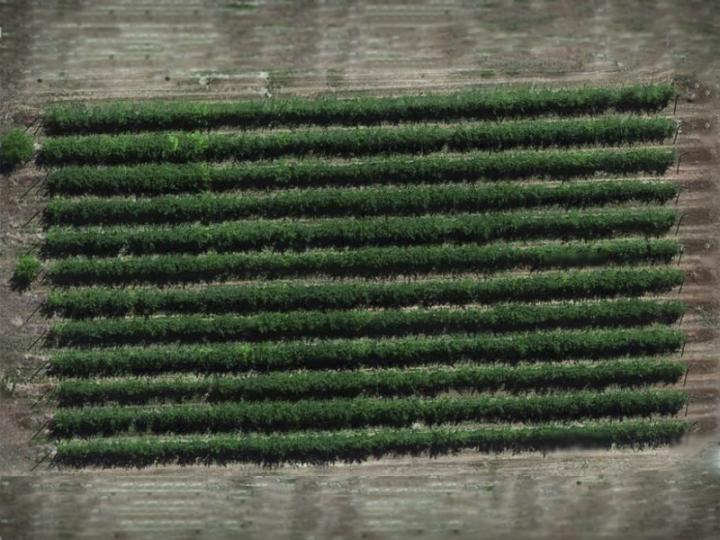
Credit: Olga Walsh
People have used the phrase “drone on and on” for a long time. Webster’s dictionary defines this figure of speech as “to speak for a long time in a dull voice without saying anything interesting.”
Yet, in agriculture, drones aren’t dull, at all!
Farmers use drones to be more efficient. Drones help farmers improve yields and stay ahead of problems before they become too big.
Olga Walsh, University of Idaho, is researching the use of drones for fruit trees. Most of the agricultural applications for drones – or, more technically unmanned aerial vehicles (UAV) – have been on grain crops like wheat, corn and soy.
“Adoption and use of crop sensors in production agriculture saves thousands of dollars every year in many crops,” says Walsh. “Crop sensors also help to significantly improve the efficiency of agricultural inputs, such as fertilizers and water. Finally, drones can minimize negative impacts of agricultural activities on environmental quality.”
In Idaho, the fruit industry grows grapes, cranberries, apples, and even alternative fruits like Asian pears. Apples are the largest fruit crop in Idaho, with over 60 million pounds of apples produced per year.1
Walsh’s research team focused on applying UAV technology to fruit trees. Her previous work has been with wheat and other crops. “We know drones can be used in orchards,” says Walsh. “But there aren’t any grower recommendations regarding what data needs to be collected and what kind of data is most useful, depending on the grower objective.”
The most promising ways the drones could be employed for the orchards and tree nurseries are:
- taking inventory of tree height and canopy volume;
- monitoring tree health and quality;
- managing water, nutrients, pests and disease in-season;
- estimating fruit/nut production and yield; and,
- creating marketing tools (videos for promotion of the orchard, or sale of trees and fruit).
Like with other uses of drones in agriculture, Walsh’s work helps to collect detailed information about the crops, faster than humans could by physically “scouting” the fields. “The UAVs are capable of acquiring images with high resolutions that are ideal for detecting various crop issues,” says Walsh.
“The UAV systems allow scanning the crops from above. They obtain high quality images and high-resolution spectral data. This is correlated with plant growth, health, water and nutrient status, and can be used to estimate biomass production.” All are indicators of potential yield.
It’s not just about the speed of scouting a field. “Sensors can function within regions of the electromagnetic spectrum where human eyes can’t,” says Walsh. “Sensors are much more reliable and objective than visual assessment. They provide quantitative information (numeric data that can be measured and compared) versus qualitative information (descriptive data that can be observed).”
Team members also perform outreach. “We conduct grower education on the use of remote sensing and using UAVs for crop monitoring,” says Walsh. “We do demonstration flights and produce publications to boost grower adoption of precision agriculture methods.”
“The overall goal of this work is to strengthen sustainability and competitiveness of Idaho fruit tree producers,” says Walsh. “Our findings increased awareness, knowledge, and adoption of crop sensors and UAVs.”
And, that’s not dull at all!
Walsh presented her work at the November International Annual Meeting of the American Society of Agronomy, Crop Science Society of America, and Soil Science Society of America in San Antonio. Funding for this project came from the Idaho State Department of Agriculture Nursery Advisory and Florist Advisory Committee.
###
1. https:/
Media Contact
Rachel Leege
[email protected]
608-268-3976




